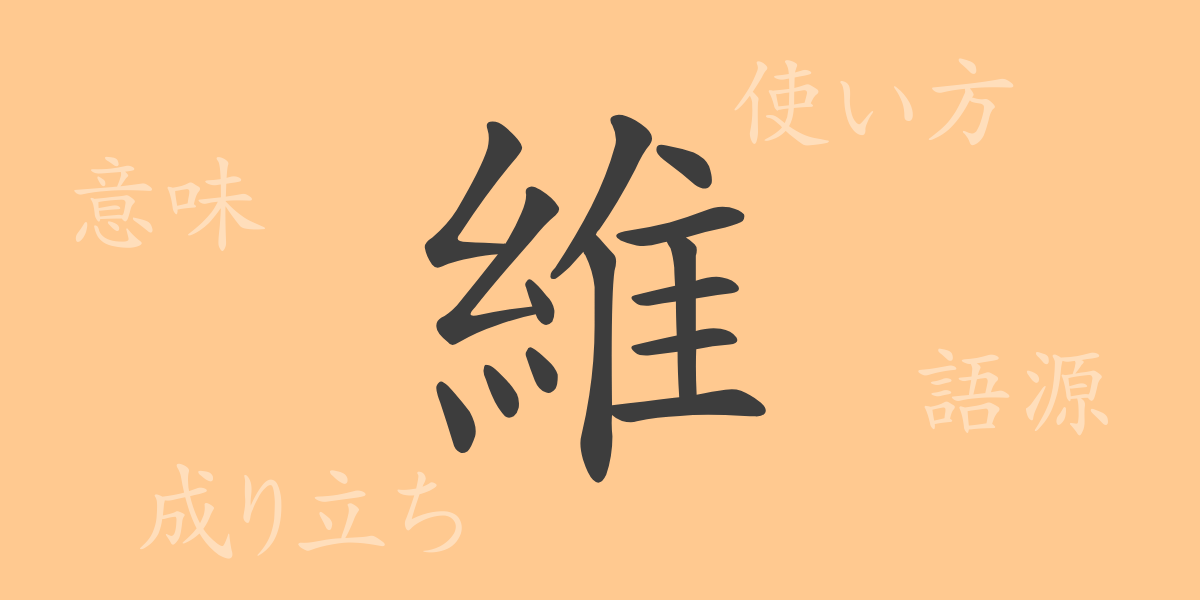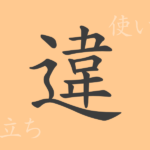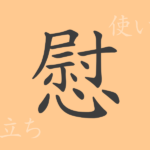“
The richness of the Japanese language is exemplified in its complex and profound Kanji characters. This time, we turn our spotlight on the common Kanji ‘維’ (I), exploring its allure. While this character appears regularly in daily life, the stories embedded in its background remain largely unexplored. Let us delve into the origins, meanings, and usage of ‘維’, as well as its role in Japanese expressions.
Origins of 維 (I)
The Kanji ‘維’ originated in ancient China as a pictograph of thread, representing threads coming together to form cloth. This imagery evolved to signify ‘to connect’ and ‘to maintain,’ reflecting how textiles were essential in people’s lives. Consequently, ‘維’ became a Kanji deeply rooted in daily existence.
Meaning and Usage of 維
‘維’ encompasses meanings like ‘to maintain,’ ‘to keep,’ and ‘to connect.’ It specifically refers to sustaining something continuously or maintaining a condition. It is also used in terms like ‘維新’ (renewal), which means ‘to renew’ or ‘to reform.’
Readings, Stroke Count, and Radical of 維
The Kanji ‘維’ is used in Japanese with various readings:
- Readings: On’yomi (Sino-Japanese reading) is ‘I’, Kun’yomi (Japanese readings) are ‘Kore’, ‘Kore-womotte’.
- Stroke Count: 14 strokes.
- Radical: The radical is ‘糸’ (Itohen), associated with thread.
Phrases, Idioms, and Proverbs Using 維
Idioms and phrases containing ‘維’ include:
- 維持 (Iji): Maintaining a state or condition.
- 維新 (Isin): Renewing or reforming old systems or things.
- 維度 (Ido): A term expressing extent or degree.
- 維管束 (Ikansoku): Tissues in plants that transport water and nutrients.
Each of these expressions reflects the fundamental meanings of ‘維’ such as ‘to maintain,’ ‘to renew,’ ‘degree,’ and ‘to connect.’
Conclusion on 維
The Kanji ‘維’, with its seemingly simple form, holds profound meanings. Commonly used in Japanese, ‘維’ encompasses concepts deeply intertwined with our lives and history, such as maintenance and renewal. Through this article, understanding the depth and background of ‘維’ may enrich your appreciation of Japanese expression.
“

























